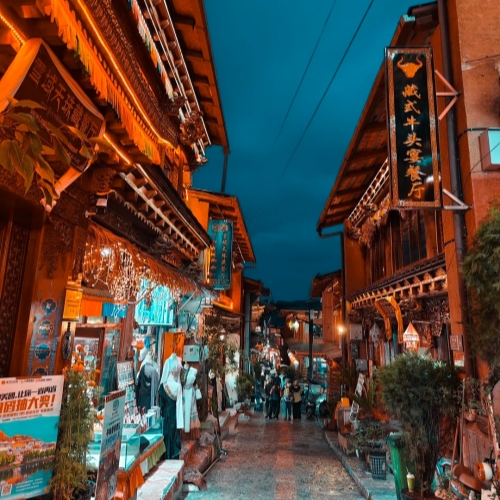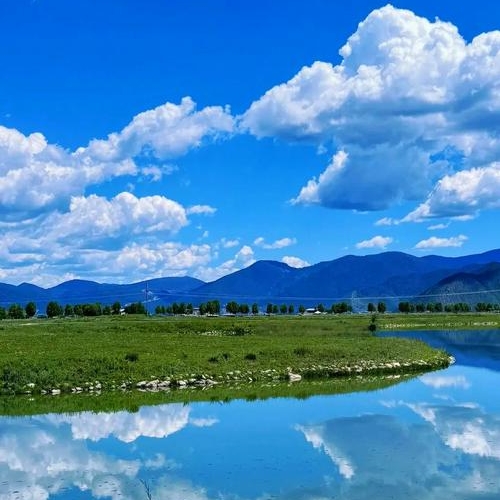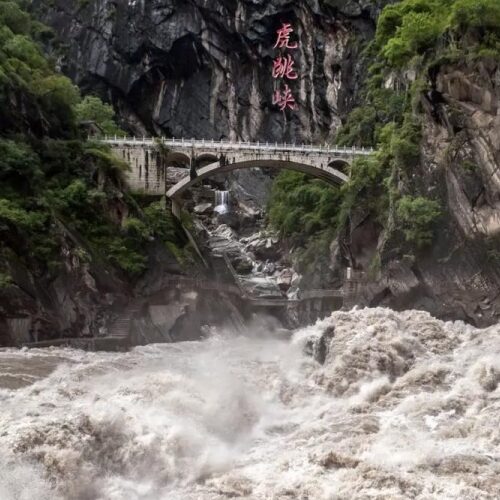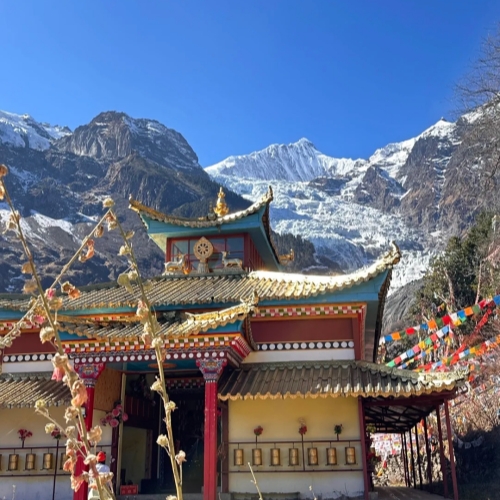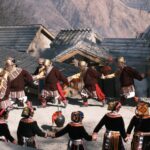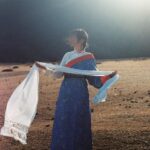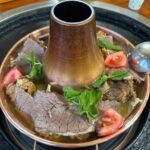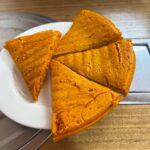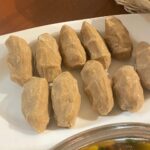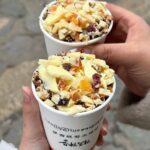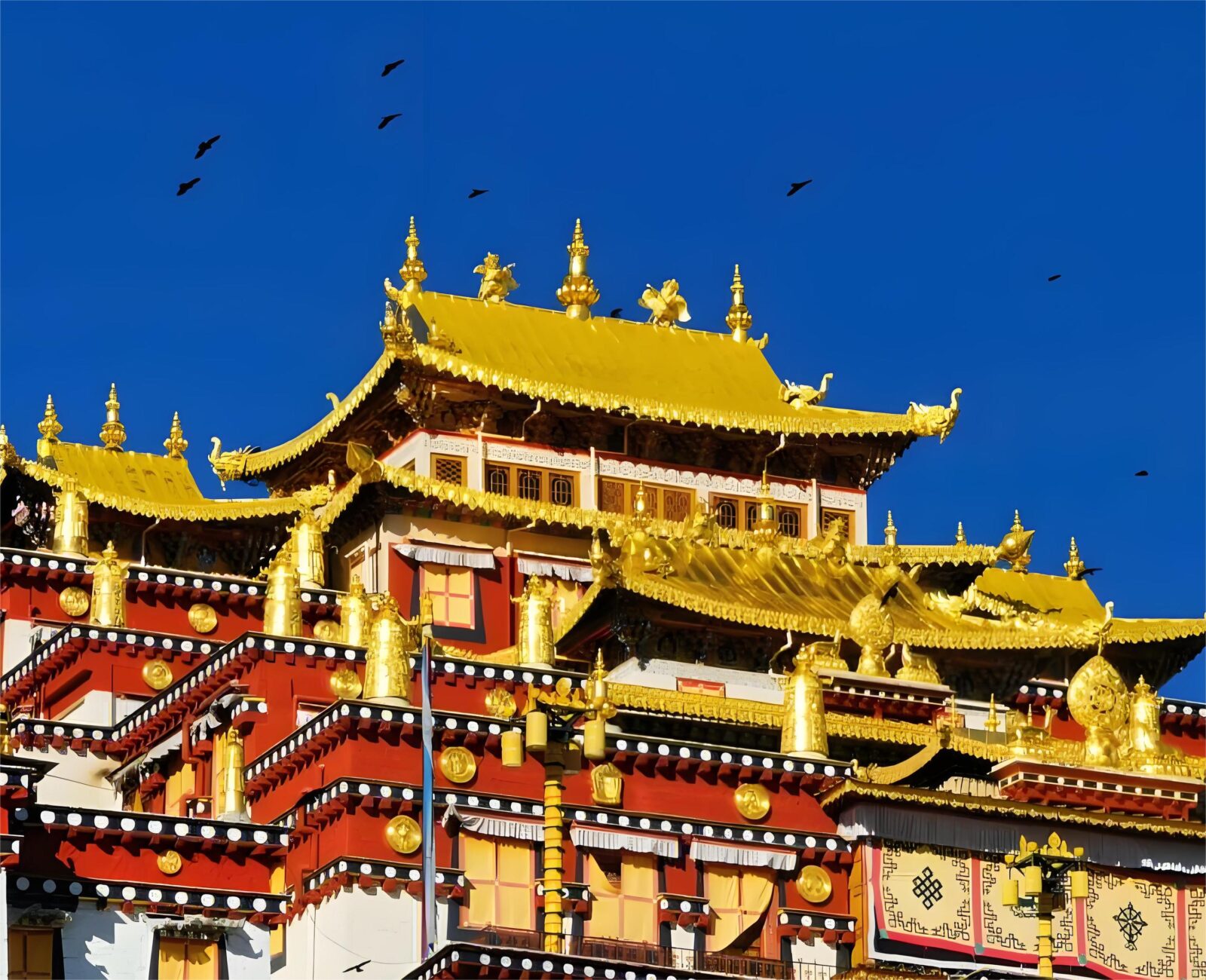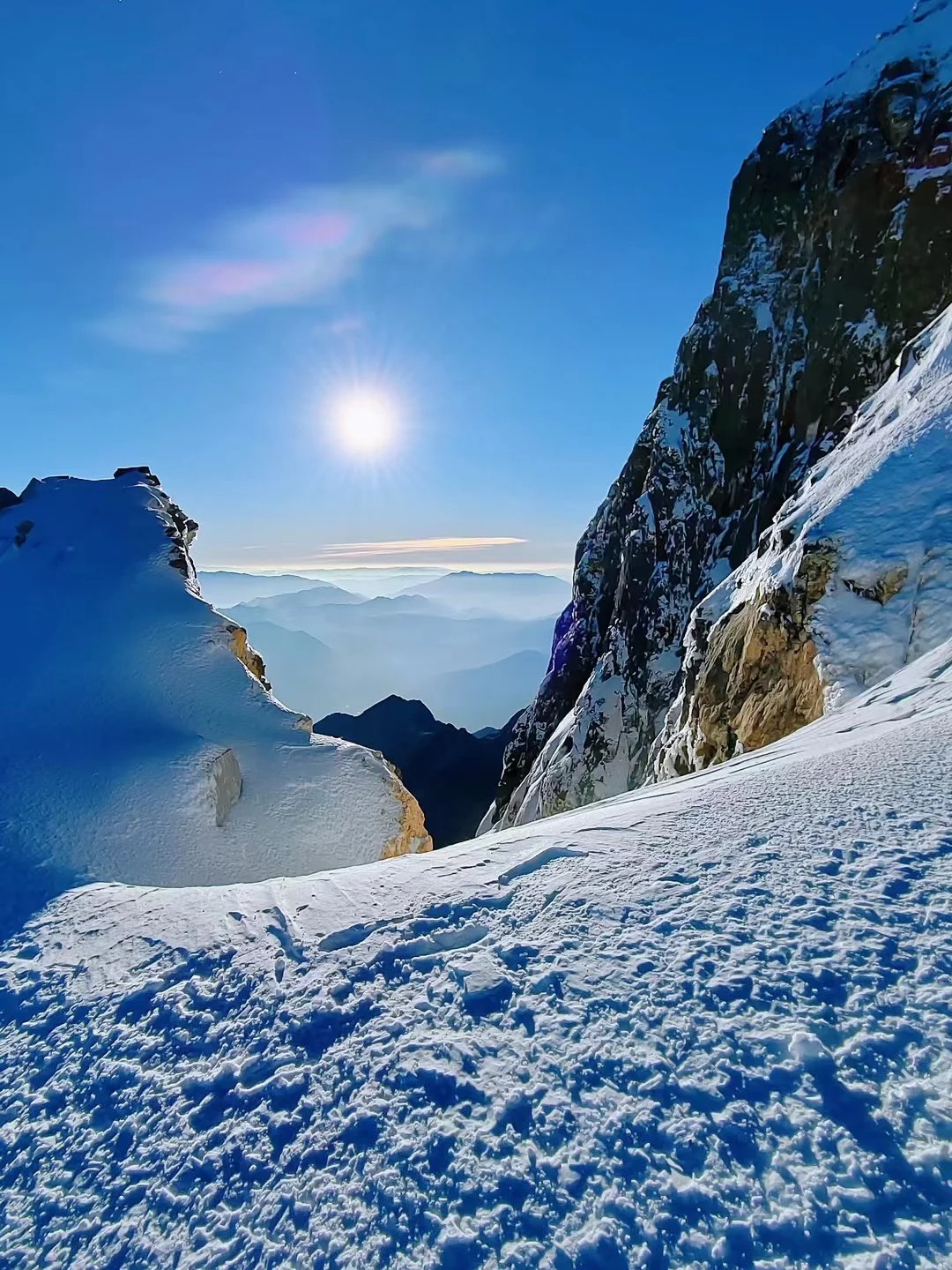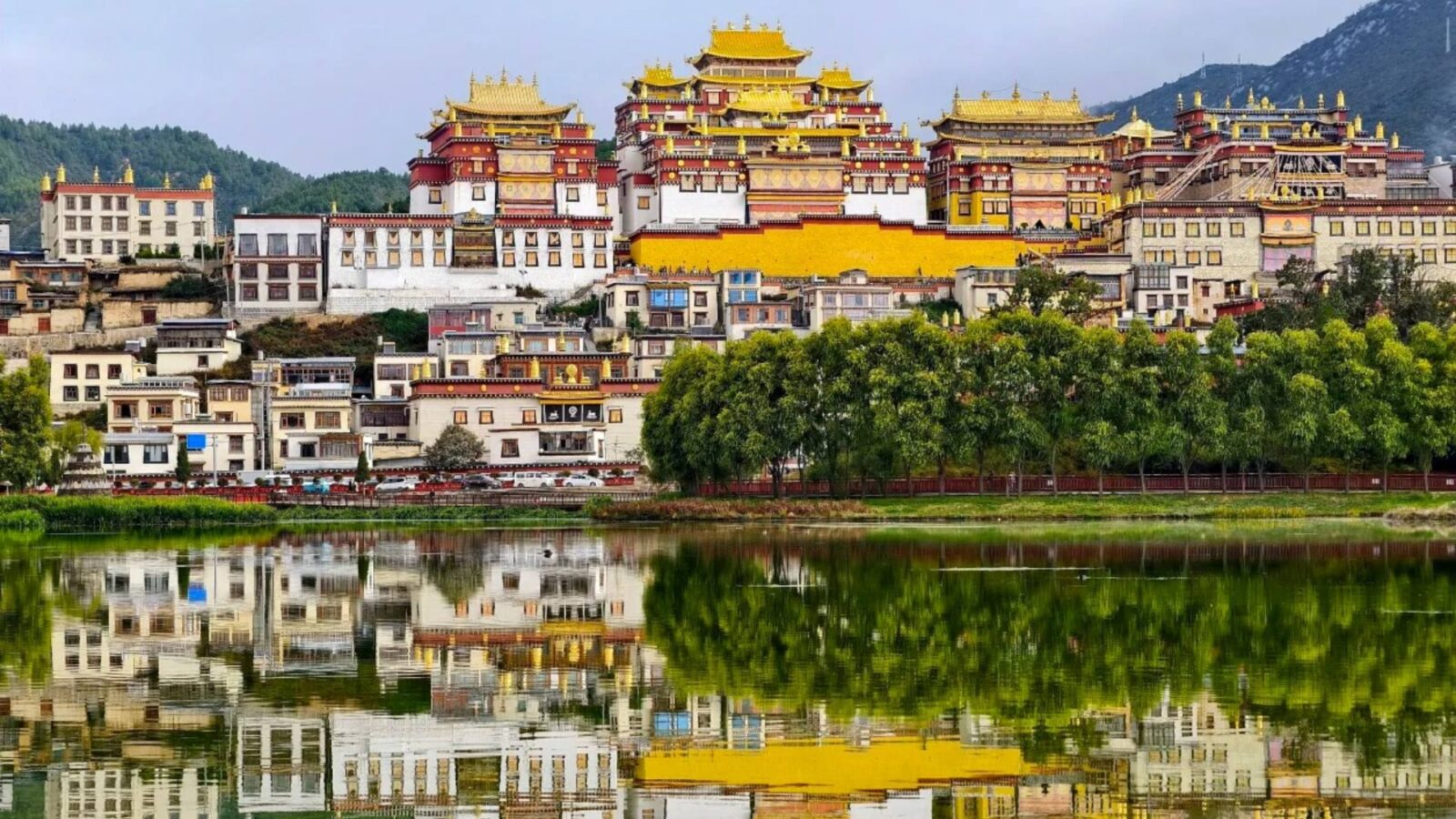 You’ve heard of Shangri-La, of course, thanks to James Hilton’s 1933 book "Lost Horizon." That mythical Himalayan paradise we all dream about. Well, guess what? It’s not a dream. It exists, and it’s located in north-western Yunnan, China. Imagine Tibetan monasteries seeing to craggy hillsides. Alpine lakes reflecting snow-capped peaks. Different ethnic groups all holding onto their ancient traditions. This guide strips away the fairy-tale aspect and concentrates on the Things to Do in Shangri-La — taking the dream journey and turning it into a trip that you can actually plan.
You’ve heard of Shangri-La, of course, thanks to James Hilton’s 1933 book "Lost Horizon." That mythical Himalayan paradise we all dream about. Well, guess what? It’s not a dream. It exists, and it’s located in north-western Yunnan, China. Imagine Tibetan monasteries seeing to craggy hillsides. Alpine lakes reflecting snow-capped peaks. Different ethnic groups all holding onto their ancient traditions. This guide strips away the fairy-tale aspect and concentrates on the Things to Do in Shangri-La — taking the dream journey and turning it into a trip that you can actually plan.
In it are all the things you’ll want that are necessary for a comfortable journey: deep attractions of such places as Pudacuo National Park and the Songzanlin Monasteries, an honest appraisal of Tibetan feeding (yak hotpot and butter tea, mainly), when to go for an absence of tourists, altitude sickness, how to get about, and what is more important, places to stay, all of which have to do with the best Things to Do in Shangri-La. If you want to trek Tiger Leaping Gorge, to take part in a Guozhuang dance circle, or perhaps see Meili Snow Mountain sunrise, throw this guide around and your trip will be one you will not forget.
What You Should Know Before Heading to Shangri-La
| 🌍 Location | Northwest Yunnan, China — where Yunnan, Sichuan, and Tibet meet |
|---|---|
| 🏔️ Altitude | Around 3,400 meters |
| 🌄 Features | Plateau landscape, vertical climate, and rich ethnic mix |
| 🏞️ Signature Attractions | Pudacuo National Park, Songzanlin Monastery, Dukezong Ancient Town |
| 🍲 Featured Cuisine | Yak meat hotpot, butter tea, qingke pancake, matsutake chicken soup |
| 🕉️ Customs & Religious Culture | Tibetan Buddhism; Guozhuang dance, prayer wheel rituals, Gedong Festival |
| 🚫 Taboos | No photography inside monastery halls; respect monk debates; spin prayer wheels clockwise |
Where the Magic Actually Happens — Top 8 Attractions to Visit
Pudacuo National Park + Songzanlin Monastery — Nature and Faith Combined
- River in Potatso National Park Yunnan
- Songzanlin Monastery
If you only have one day in Shangri-La, start it here. Pudacuo National Park (click the words, check the detailsof the special park) feels like something out of a dream — deep green forests, still blue lakes, and herds of yaks just doing their thing. Walk the wooden trails around Shudu or Bita Lake, take a deep breath, and you’ll understand why locals never rush life here. Tickets run about 258 RMB, shuttle bus included, and mornings are way quieter.
A quick 20‑minute drive later, you’ll hit Songzanlin Monastery, Yunnan’s biggest Tibetan Buddhist monastery, often nicknamed the “Little Potala Palace.” The golden roofs sparkle under the sun, while monks chant inside halls heavy with the smell of butter lamps. Entry is 90 RMB, and photos aren’t allowed inside — trust me, you’ll remember the feeling better than any picture. End the day watching the light fade behind the monastery’s red walls — it just hits different.
Dukezong Ancient Town + Napa Hai Grassland — Old Town Charm and Wild Beauty
- Dukezong Ancient Town
- Napa Hai Grassland
The Dukezong Ancient Town is that kind of place where every corner tells an old story. Cobbled streets, wooden houses, and the world’s largest prayer wheel spinning slowly in the wind. At night, locals gather under the moon for Guozhuang dancing — you don’t need to know the steps, just join in. It’s free, and no one cares if you’re off beat.
Then, jump on a bike or grab a taxi to Napa Hai Grassland. Depending on the season, it’s either a sea of green dotted with yaks and horses, or a shimmering lake reflecting the sky. Winter brings migrating birds, including black‑necked cranes if you’re lucky. Biking costs 30–50 RMB, or rent a car for about 300 RMB if you want to loop the whole area. It’s a simple day that makes you feel part of the landscape.
Tiger Leaping Gorge + Baishuitai — Power and Purity in Contrast
- Tiger Leaping Gorge
- Baishuitai
At Tiger Leaping Gorge (click the words, find the guide of hiking), the Jinsha River doesn’t just flow — it roars. Standing there between the cliffs, you’ll feel tiny in the best way. The Shangri‑La section has a solid three‑hour hike with fewer people than Lijiang’s side. Entry is 65 RMB, and if you want a local guide, budget 150 RMB. It’s raw, loud, and unforgettable.
Then there’s Baishuitai, a total shift in energy. About a three‑hour drive away, this place glows white like snow even under the sun. The mineral terraces look like frozen waterfalls — locals call it “the field left by immortals.” Entry is 30 RMB, and if you go around midday, the light turns everything golden. It’s quiet, surreal, and you’ll probably whisper without meaning to.
Meili Snow Mountain + Feilai Temple — Sacred Peaks and Sunrise Glow
- Meili Snow Mountain
- Feilai Temple
If Shangri‑La had a crown, Meili Snow Mountain would be the jewel. The main peak, Kawagebo, stands 6,740 meters high, and locals say no one has ever reached the top — it’s sacred. Before dawn, everyone gathers at Feilai Temple, clutching hot tea, waiting for that “Golden Sunrise.” When the first light hits the snow peak, the whole crowd goes silent. It lasts maybe five minutes, but it’s magic.
The temple itself is small, with rows of prayer wheels and butter lamps flickering in the cold air. Entry’s free, though you can drop a few yuan in the donation box. Only about 30–40% of mornings are clear enough to see the golden glow, so spending the night nearby is totally worth it. You leave with frozen fingers, warm tea in your hands, and that quiet sense that some places just don’t need words.
Feel the Rhythm of Local Life — Shangri-La’s Living Traditions
Gedong Festival — Sacred Dances That Shake the Mountains
Ever seen monks dance in full costume? The Gedong Festival at Dongzhulin Monastery is wild in the best way. Around Tibetan New Year, the air fills with drums, chants, and swirling colors as monks in masks perform ancient cham dances. It’s not some staged show—it’s real devotion on display. Standing there, you can literally feel the ground vibrate. Locals say it brings peace and balance for the year ahead, and honestly, it’s hard not to feel moved watching it all unfold.
Guozhuang Dance — Join the Circle and Feel the Beat
By the time the sun sets over Dukezong Old Town, the music starts at Moonlight Square. Locals link hands for Guozhuang, a traditional circle dance that’s all rhythm and laughter. The best part? No one cares if you don’t know the steps. Just hop in, follow the beat, and you’ll pick it up after one song. I joined once and totally stepped on a few toes—but everyone just laughed and kept dancing. It’s the easiest way to feel like you actually belong there.
Prayer Wheels — Finding Calm in Every Spin
You’ll see them everywhere—golden prayer wheels lined up outside temples or squares. Locals walk by, spinning each one clockwise with a calm rhythm. They say every turn sends a prayer into the wind. Try it once, and you’ll get why people do it. The gentle spin, the soft sound, the chill mountain air—it’s unexpectedly relaxing. It’s less about religion and more about slowing down and breathing for a second.
Butter Tea and Hada — A Warm Welcome, Tibetan Style
Tibetans don’t just say hello—they offer you a white hada scarf and a steaming cup of butter tea. The scarf means blessing; the tea means warmth. The first sip might shock you—it’s salty, rich, and thick with yak butter—but somehow it fits the altitude and the chill in the air. Locals sip it all day, and before long, you’ll catch yourself craving another cup. It’s a welcome that feels more like being part of a family than a guest.
Eat Like a Local — Tibetan Food You Can’t Skip
Yak Meat Hotpot — A Bowl of Warmth in the Cold Highlands
If you come to Shangri-La and skip yak meat hotpot (牦牛肉火锅), you’re seriously missing out. It’s not just food; it’s warmth in a bowl. Locals swear it keeps them strong in the thin mountain air. The broth simmers all day with yak bones and wild mushrooms, and the smell alone will pull you in from the street. Every restaurant has its own secret spices, but that rich beefy kick? Always the same. Expect to pay around 68–90 RMB per person, and trust me—it’s worth every bit when the cold hits.
Qingke Pancake and Tsampa — The Daily Taste of Tibetan Life
Here’s what locals actually eat day to day: Qingke pancake (青稞饼) and Tsampa (糌粑). Both come from highland barley, so they taste nutty and earthy in the best way. The pancakes are slightly sweet, warm, and perfect with yak butter. Tsampa? It’s a mix of roasted barley flour with butter tea or yogurt—simple but filling. You’ll find them everywhere, from tiny stalls to teahouses, usually for 3–5 RMB. Grab one for breakfast and you’ll feel like you could hike all morning.
Yak Yogurt and Butter Tea — Creamy, Salty, and Surprisingly Addictive
Yak yogurt (牦牛酸奶) and butter tea (酥油奶茶) are pure local vibes. The yogurt’s thick, tangy, and kind of addictive—nothing like store-bought stuff. A small jar costs about 10 RMB, and it’s great after a spicy meal. Butter tea is salty and buttery, yeah, kind of shocking at first sip—but then it grows on you. Locals sip it all day long to stay warm, and it pairs perfectly with milk pancakes.
When to Go and What to Expect — Seasons That Change Everything
Spring/Summer (May-August) — Rhododendrons and Mountain Breeze
May-June delivers famous rhododendron blooms. Pudacuo hits peak around May 20-June 10. Temperatures hit 15-20°C—perfect for hiking. I visited early June wearing a light jacket mornings, t-shirts by afternoon. Downside: accommodation costs 30-40% more as tourists flood in.
July-August brings monsoon rains with afternoon storms 4-5 days weekly. Roads sometimes close from landslides. I learned this in August 2022 when our Meili trip canceled because roads washed out. However, crowds thin and you'll find better deals on tours.
Autumn (September-October) — The Golden Months Everyone Loves
September-October earns universal praise. Napa Lake's flowers bloom yellow across grasslands, Pudacuo's forest turns golden. I visited late September 2024—perfect weather, 18°C, minimal rain. Meili appeared crystal clear three mornings straight, which locals called exceptional luck.
Target late September through early October avoiding October 1-7 National Holiday. I visited that week once—hotels tripled rates, Pudacuo entrance took 2.5 hours, restaurants ran out of food by 1 PM. The sweet spot: September 20-30 or October 8-15. Ctrip data shows October 8+ has 50% more availability at 30-40% lower prices.
Winter (November-April) — Quiet, Cold, and Beautifully Still
Winter transforms Shangri-La into a quieter destination. Songzanlin holds Sunning of the Buddha Festival in late November. I attended in 2023 watching thousands prostrate before the sacred textile. Ceremony starts at dawn—freezing.
Benefits include dramatically lower costs. Guesthouses charge 50-60% less. A 300 RMB room might drop to 120-150 RMB in January. Pudacuo in February had fewer than 30 people. The cold tests preparation though—daytime -5°C to 8°C, nights to -15°C. Guesthouses lack central heating, provide electric blankets instead.
How Long to Stay — Planning Your Ideal Trip Pace
2-Day Express Tour — A Whirlwind but Worth It
This two-day plan hits Shangri-La’s key spots in order and keeps things tight. Day one starts early at Songzanlin Monastery around 9 AM for prayers, then shifts to Dukezong Ancient Town for lunch, street walks, and the giant prayer wheel before sunset at Moonlight Square. Day two is all about Pudacuo National Park—depart by 7:30 AM, spend half a day hiking boardwalks around Shudu and Bita Lakes, then head back via Napa Lake if you still have daylight.
Expect to spend roughly 1,500–2,000 RMB per person covering two nights’ stay, food, entry tickets, and transport. Skip add-ons like family visits—you won’t have time. Stay near the old town to save transfers. This short route works for fast travelers or weekend trippers but misses the slow rhythm of local life.
It’s best suited for tight-schedule visitors, business stopovers, or backpackers hopping cities. Families or photographers may find it too packed. If you follow it, focus on Songzanlin and Pudacuo for the most iconic sights, and save Tiger Leaping Gorge or Meili Snow Mountain for a future trip.
4-Day Deep Dive — Slow Down and Soak It All In
This four-day plan balances comfort and coverage neatly. Day one is for acclimatizing—arrive, check in, stroll Dukezong slowly, hydrate well, and rest early. Don’t overdo it. Day two begins at Songzanlin Monastery for morning prayers and the debate session, then continues to Napa Lake for sunset views and wildlife photography.
Day three belongs entirely to Pudacuo National Park. Leave at dawn, pack food, and spend the day hiking from Shudu Lake to Bita Lake before returning to town. Day four stays flexible: hikers can tackle Tiger Leaping Gorge, culture fans can visit Nisi village, and mountain chasers can attempt a Meili Snow Mountain sunrise trip. If altitude hits hard, make it a chill shopping day instead.
Plan around 2,500–4,500 RMB per person, covering four nights’ lodging, meals, entrance tickets, and transport. Flights aren’t included. This setup gives enough time for rest and spontaneity without feeling rushed, letting you actually feel the pace of Shangri-La rather than just pass through it.
Getting Around and Where to Stay — The Smart Traveler’s Guide
Getting There — Flights, Buses, and Self-Drives Compared
| Transport Method | Duration & Cost | Highlights | Notes |
|---|---|---|---|
| Flight | Kunming 1h (400–800 RMB), Chengdu 1.5h (600–1,200 RMB) | Fastest but less acclimatization time | Airport 4 km from town; shuttle 20 RMB/hourly; taxi 80–100 RMB |
| Bus | Lijiang 4–5h (65–75 RMB), Kunming 10–13h (150–220 RMB) | Gradual altitude adjustment | Comfortable scenic ride; overnight buses not ideal for light sleepers |
| Self-Drive | ~4–5h from Lijiang via G214 | Full flexibility, scenic valleys and passes | Requires mountain-driving skill; icy roads in winter; refuel often |
Local Transport Options — From Car Hires to Handy Bus Routes
Hiring a private car is the simplest way to visit scattered sites. It costs 500–800 RMB a day and includes fuel. Most hotels can arrange reliable drivers.
Public buses suit short rides in town. Route 3 links Dukezong Ancient Town and Songzanlin Monastery for 1–2 RMB, running every 30 minutes from 7 AM to 7 PM.
Car rentals cost 300–400 RMB daily plus fuel. Foreign licenses aren’t valid, so hiring a driver is safer.
Tips: Confirm prices early, keep small cash ready, and avoid winter self-driving.
Where to Sleep — Choosing Between Ancient Town Charm and Modern Comfort
| Accommodation Type | Budget Range | Advantages | Disadvantages |
| Dukezong Guesthouses | 120–300 RMB/night | Authentic Tibetan ambiance, central location, local charm | Thin walls, weak heating, inconsistent maintenance |
| New District Hotels | 180–250 RMB/night | Reliable amenities, heating, WiFi, and clean bathrooms | 2–3 km from old town, lacks cultural vibe |
| Songtsam Luxury Hotels | 1,500–3,000 RMB/night | Premium comfort, heated floors, Tibetan design, mountain views | Very high cost, limited to special occasions |
Booking Tips:
• Check real guest photos on Ctrip, Booking.com, and TripAdvisor.
• Read Chinese reviews for extra details often missed in English.
• Book 2–3 months early during holidays or negotiate discounts off-season.
• Compare prices—Ctrip, Booking.com, and direct calls can differ by 10–15%.
• Use WeChat Pay or Alipay for better rates and confirm bookings before arrival.
Staying Healthy Up High — Altitude Tips You’ll Be Glad You Knew
Recognizing and Preventing Altitude Sickness — Start Before You Arrive
Common Symptoms: Headache, nausea, dizziness, fatigue, and shortness of breath affect 60–70% of visitors.
Prevention Before Travel: Take Rhodiola rosea (100–200mg twice daily) one week in advance; maintain good fitness for easier adaptation.
Arrival Tips: Rest on the first day, drink 3–4 liters of water, avoid alcohol, and eat light.
Activities to Avoid Early: Climbing trails like those in Pudacuo Park can worsen symptoms before acclimatization.
Oxygen and Emergency Help — What to Do If It Hits
Oxygen Access: Buy canisters in town for 30–50 RMB; avoid airport markup (60 RMB).
Accommodation Support: Many hotels offer oxygen for guests, sometimes free.
Emergency Care: Go to Shangri-La County People’s Hospital (Changle Road) for 24-hour oxygen chamber treatment (200–300 RMB/session).
Warning Signs: Severe breathlessness, vomiting, or confusion require medical help.
Dressing for the Heights — Layers, Sunscreen, and Cold-Weather Tricks
Layering Strategy: Base layer + fleece/down + windproof shell; adjust through the day as temperature varies 15–20°C.
Sun Protection: Use SPF 50+ sunscreen, reapply every 2–3 hours, wear sunglasses and wide-brim hat.
Seasonal Packing:
– May–Sep: light layers + rain jacket.
– Oct–Nov: add fleece or down jacket.
– Dec–Mar: heavy down jacket (−15°C rated), gloves, thermal wear, hand warmers (10–15 RMB/10-pack).
FAQ: Common Shangri-La Travel Questions And Honest Answers
Q: Is altitude sickness guaranteed in Shangri-La or can some people avoid it completely?
Not everyone experiences altitude sickness in Shangri-La. Fitness, genetics, and how fast you acclimate matter most. Some visitors feel fine, others need oxygen. The elevation—3,400 meters—makes altitude symptoms common but not certain. To reduce risk, ascend gradually from Lijiang and rest well. Among all things to do in Shangri-La, understanding altitude effects tops the list of must-knows for smooth travel.
Q: Can I visit Shangri-La in winter without freezing to death?
Yes, winter travel is possible with proper layers. Temperatures drop below freezing, but it’s manageable. Wear thermals, down jackets, insulated boots, and gloves. Hotels provide heaters and electric blankets. Fewer crowds and cheaper stays await. If you enjoy peace and photography, winter should be on your list of things to do in Shangri-La. Just pack smart, and you’ll love its frozen charm.
Q: How much Chinese do I need to get around Shangri-La independently?
A few Chinese phrases go a long way. Most locals speak little English, so apps like Google Translate or Pleco help. Learn key words for food, prices, and directions. Booking hotels via English-friendly sites helps too. In shops or markets, simple gestures often work. Communication turns into fun cultural exchanges—that’s one of the rewarding things to do in Shangri-La, really connecting with locals.
Q: Are there altitude restrictions for elderly travelers or people with health conditions?
If you have heart or lung issues, ask your doctor first. Many older travelers visit successfully with gradual ascent and slow pacing. The altitude can strain your body, so hydration and rest matter. With preparation, it’s still one of the achievable things to do in Shangri-La for seniors seeking adventure at high altitude.
Q: What's the real difference between a 500 RMB tour and an 800 RMB tour?
The difference comes down to comfort and crowd size. Cheap tours pack large groups and include forced shopping stops. Mid-range ones offer smaller groups, better guides, and decent food. Premium tours, though pricier, often skip the gimmicks. Choosing wisely can turn sightseeing into one of the best things to do in Shangri-La without frustration.
Q: Is Shangri-La worth visiting if I've already been to Tibet?
Yes, but expectations matter. Shangri-La is like a milder version of Tibet—less remote, easier to reach, and more comfortable. Monasteries here are smaller yet still spiritual. The mix of Tibetan and Yunnan culture gives a unique vibe. It’s one of the peaceful and photogenic things to do in Shangri-La if you seek culture without extreme hardship.
Q: How strictly do they enforce photography rules at monasteries?
Rules vary by place. Outside shots are fine, but inside prayer halls, photography is forbidden. When I visited Songzanlin Monastery, I noticed tourists ignoring signs—it felt wrong. Always ask before photographing monks or rituals. Respecting customs keeps tourism sustainable. Observing this etiquette becomes one of the most meaningful things to do in Shangri-La.
Q: Do I need special permits to visit Shangri-La like I would for Tibet?
No, Shangri-La is part of Yunnan Province, not Tibet, so no special permits. A valid Chinese visa is enough. You can book transport, hotels, and tours freely. For visitors who hate red tape, the freedom itself is one of the simplest things to do in Shangri-La—just arrive and explore.
Q: What happens if I get seriously sick from altitude—will insurance cover it?
Most travel insurance covers mild altitude sickness up to around 4,500 meters. Shangri-La sits within that range. Still, read your policy carefully—some exclude altitude issues. I used a plan costing 120 RMB via Alipay that included evacuation and hospital care. Having proper insurance ensures peace of mind, especially when planning things to do in Shangri-La that involve outdoor treks.
Q: Should I book accommodations in advance or find them upon arrival?
During holidays, always book early—especially in October and summer. Off-season travelers can find walk-in discounts easily. Booking the first night ahead makes things easier. For spontaneous travelers, winter offers cheap, flexible stays. Managing where you sleep smartly is one of the practical things to do in Shangri-La that keeps trips stress-free.


